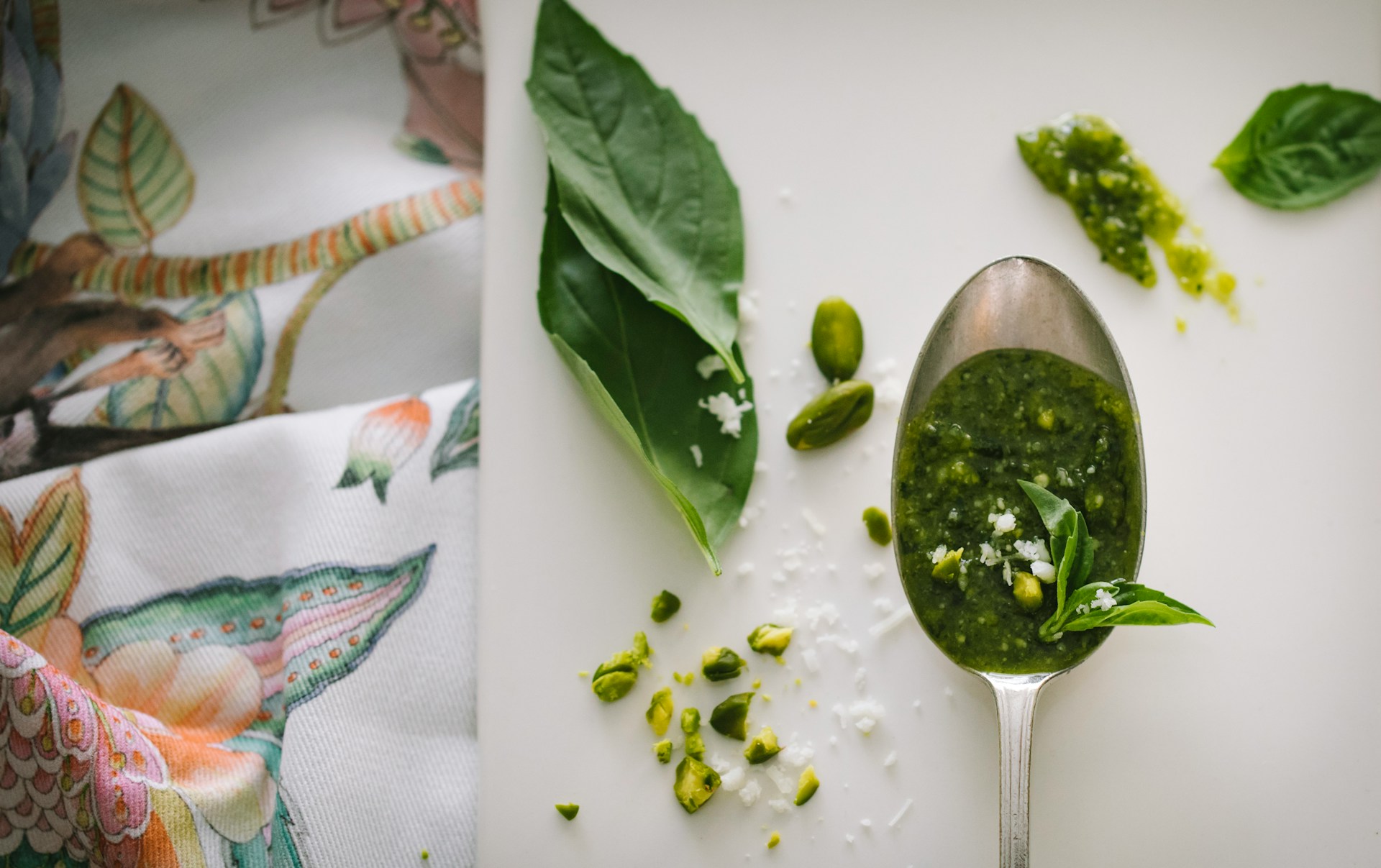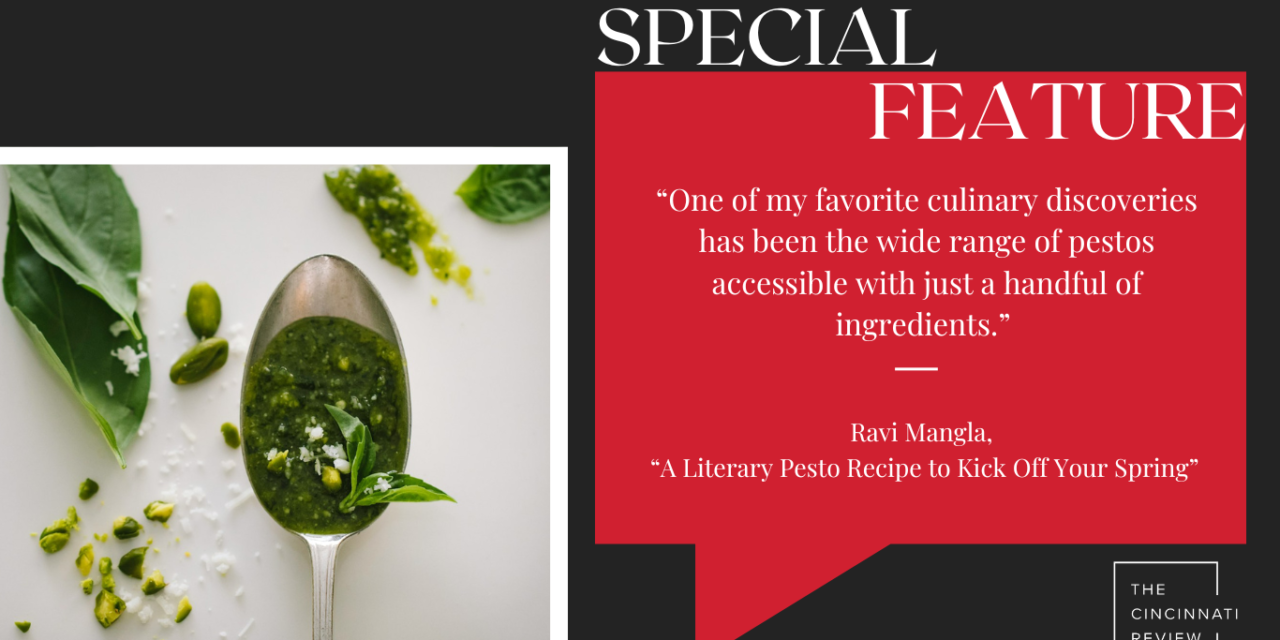
A Literary Pesto Recipe to Kick Off Your Spring
By Ravi Mangla
Photo by Nathalie Jolie on Unsplash
Assistant Managing Editor Bess Winter:
Issue 21.1 is hitting mailboxes right now, and Ravi Mangla’s wickedly funny story, “Flavors of Tuscany” is on the menu. In celebration of both spring and our new issue, we asked Ravi to share something with our readers that will help whet their appetites for his piece—an antipasto, if you will. He came back with this genuinely delicious-sounding recipe that was well-received in the Cincinnati Review test kitchens.

Note from Ravi
My short story (“Flavors of Tuscany”) in the latest print issue of the journal is inspired, among other things, by people finding solace in food and cooking during the pandemic. We all remember the pictures on Instagram of crusty sourdoughs, plump banana loaves, and handmade pastas aplenty. And while I wouldn’t call myself a chef by any stretch, I have made an effort to sharpen my cooking skills over the past few years.
One of my favorite culinary discoveries has been the wide range of pestos accessible with just a handful of ingredients. Pesto has a special place in literary lore as well. The phrase “e pluribus unum” supposedly derives from Virgil’s recipe for pesto. His poem, “Moretum,” describes a farmer named Symilus preparing his morning meal, which includes instructions for making an ancient pesto.
To be fair, Symilus’s spread is quite a bit different from pestos of the present day. The recipe calls for celery, parsley, rue, and coriander seed (along with an inordinate amount of garlic). Basil—which is actually native to India and Southeast Asia—wouldn’t make its way to Italy until the Middle Ages, despite its seeming ubiquity in Italian cuisine.
As a modest token of gratitude for being a Cincinnati Review reader, I wanted to offer up the recipe for a (surprisingly) good pesto made from garlic, walnuts, and frozen peas.
Ingredients
- 1/2 cup of frozen peas
- 1/2 cup of walnuts
- 1/4 cup of grated Parmesan
- 1/4 cup of extra virgin olive oil
- 3 cloves of garlic
- Salt and pepper to taste
- Optional: a few leaves of mint or basil
Instructions
Add the peas (either frozen or defrosted), walnuts, garlic, Parmesan, and olive oil to a food processor. Pulse until you have a silky green puree. Add additional olive oil if necessary. Taste. Add salt, pepper, and/or mint or basil depending on your preference.
When using the pesto for pasta, be sure to set aside 1/4 of the salted pasta water to incorporate in the sauce.
Pair with a Natalia Ginzburg or Elena Ferrante novel.
Ravi Mangla‘s most recent novel is The Observant (Spuyten Duyvil, 2022). His stories have appeared in American Short Fiction, Wigleaf, Salt Hill, and Barrelhouse. He lives in Philadelphia, PA.











